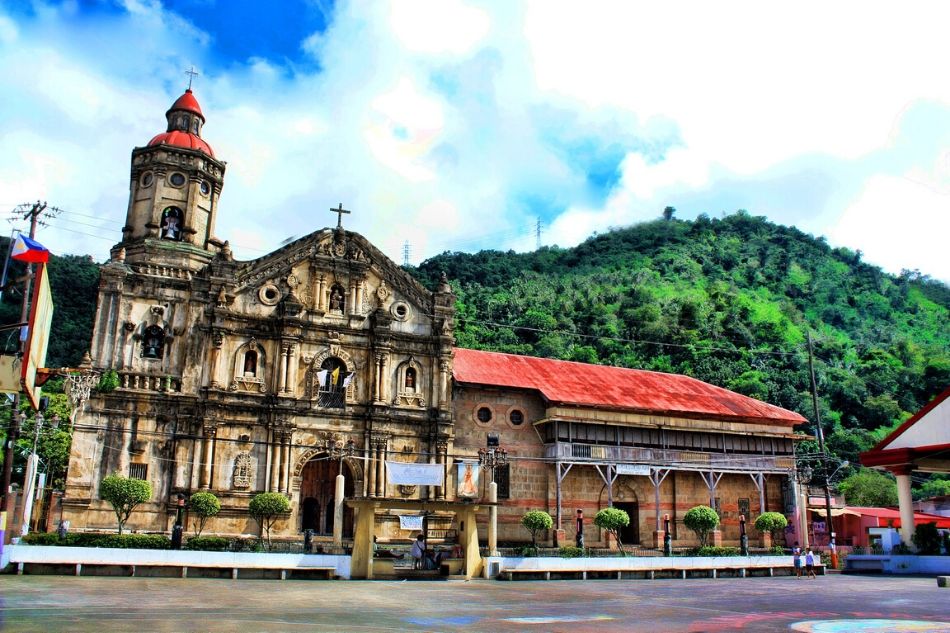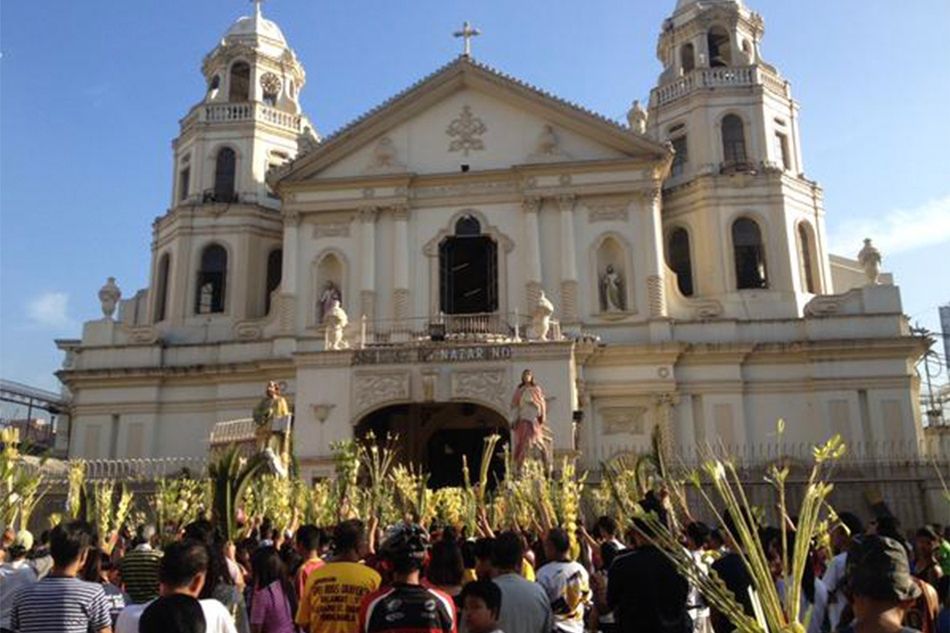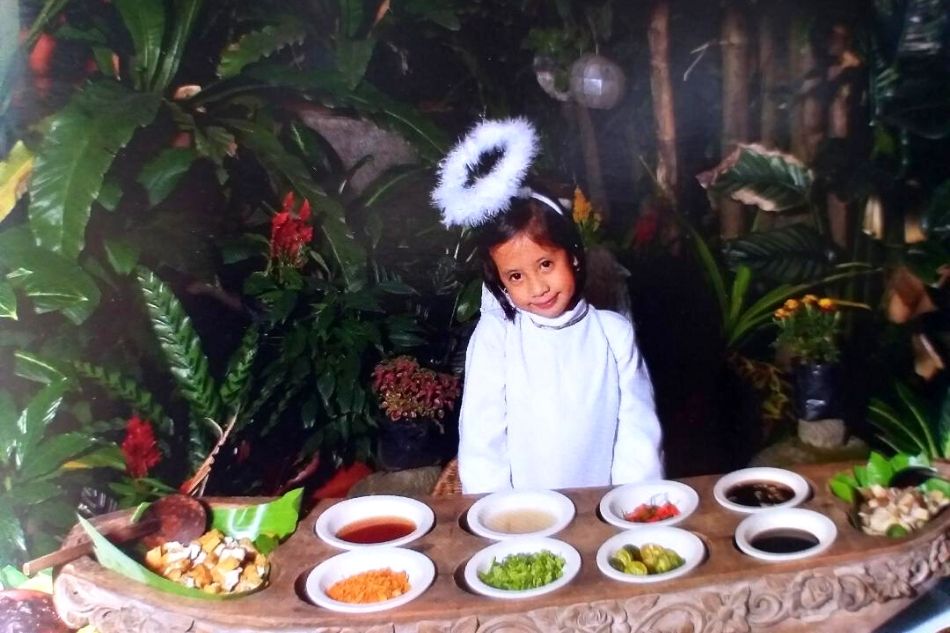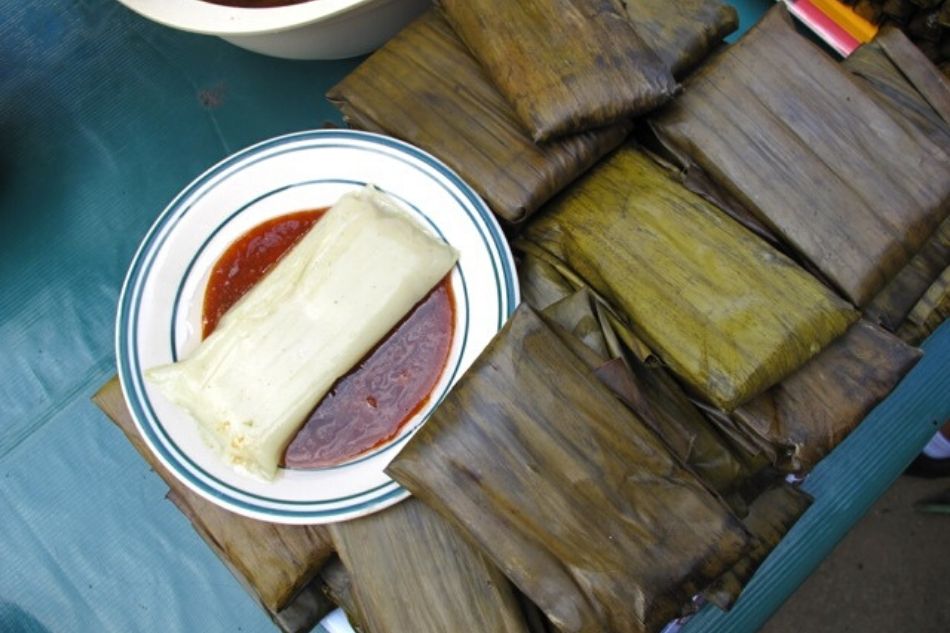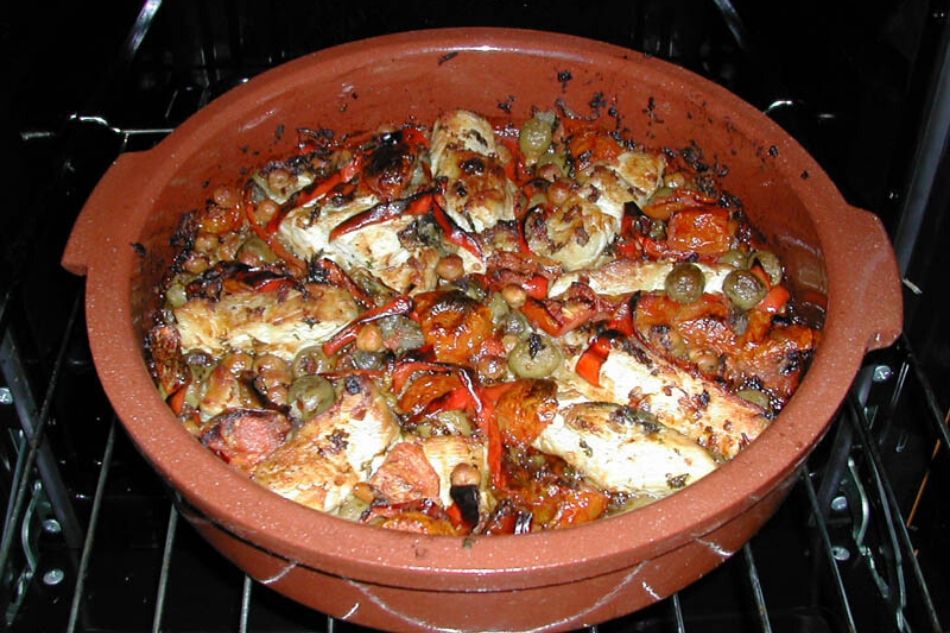Lechon for lent, a Good Friday bacalao, and more little-known Holy Week food traditions | ABS-CBN
ADVERTISEMENT

Welcome, Kapamilya! We use cookies to improve your browsing experience. Continuing to use this site means you agree to our use of cookies. Tell me more!
Lechon for lent, a Good Friday bacalao, and more little-known Holy Week food traditions
Lechon for lent, a Good Friday bacalao, and more little-known Holy Week food traditions
ABS-CBN News
Published Apr 11, 2020 10:03 PM PHT
|
Updated Apr 12, 2020 05:52 AM PHT
On Good Friday, it’s fiesta in Bantayan Island in Cebu province. It has been given special dispensation by the Church to serve lechon on the day when every Catholic should abstain from eating meat. We suppose that also means fasting is not required.
On Good Friday, it’s fiesta in Bantayan Island in Cebu province. It has been given special dispensation by the Church to serve lechon on the day when every Catholic should abstain from eating meat. We suppose that also means fasting is not required.
This has made the island the place to visit by outsiders curious about the event. We had planned a trip, but common sense dissuaded us. We heard about tourists jamming the boats going there and how the lack of living quarters have made visitors sleep on the beach, excellent though its white sands are. It probably would be better to visit during quiet times and taste the best the place offers—seafood.
This has made the island the place to visit by outsiders curious about the event. We had planned a trip, but common sense dissuaded us. We heard about tourists jamming the boats going there and how the lack of living quarters have made visitors sleep on the beach, excellent though its white sands are. It probably would be better to visit during quiet times and taste the best the place offers—seafood.
Not eating meat isn’t too hard for our family. We have seafood every day. Our family comes from seafood-eating regions—Bataan, Navotas, La Union. Which is why I have always wondered why most Filipinos would find it difficult to abstain.
Not eating meat isn’t too hard for our family. We have seafood every day. Our family comes from seafood-eating regions—Bataan, Navotas, La Union. Which is why I have always wondered why most Filipinos would find it difficult to abstain.
You may also like:
You may also like:
- The very secretive kitchens of Samar
- A reintroduction to Vigan by way of its food
- ‘Sarciadong aquarium’ and the longheld tradition of repurposing yesterday’s fried fish
- The dalagang bukid and the mystery of the cloistered ladies of Panay Bukidnon
- From maya-maya to hasa-hasa: Our local fish names and the Pinoy love for reduplication
- The very secretive kitchens of Samar
- A reintroduction to Vigan by way of its food
- ‘Sarciadong aquarium’ and the longheld tradition of repurposing yesterday’s fried fish
- The dalagang bukid and the mystery of the cloistered ladies of Panay Bukidnon
- From maya-maya to hasa-hasa: Our local fish names and the Pinoy love for reduplication
My maternal grandmother was quite strict about observing Good Friday. No bathing, she commanded. Watch the Seven Last Words on television. Abstain and, for adults, fast. This from a rather modern woman who didn’t like to attend misa cantata (masses with Gregorian chants) or mass schedules where she knew the priest was going to deliver a sermon. So, when she no longer was with us, somehow my siblings and I felt free to roam on that somber day.
My maternal grandmother was quite strict about observing Good Friday. No bathing, she commanded. Watch the Seven Last Words on television. Abstain and, for adults, fast. This from a rather modern woman who didn’t like to attend misa cantata (masses with Gregorian chants) or mass schedules where she knew the priest was going to deliver a sermon. So, when she no longer was with us, somehow my siblings and I felt free to roam on that somber day.
ADVERTISEMENT
On a tour of Laguna with only our cars on the road, we stopped by Pakil hoping there would be a restaurant open for merienda. To our surprise, there was, at the back of the Church where we were directed. The Beatle’s Place, a bar and sing-along joint on ordinary days was serving guinataang tilapia. The menu was already limited because the crew of the book, Cuaresma, was there. They were waiting to photograph the procession of the crucified Christ that would stop outside where the caridad was.
On a tour of Laguna with only our cars on the road, we stopped by Pakil hoping there would be a restaurant open for merienda. To our surprise, there was, at the back of the Church where we were directed. The Beatle’s Place, a bar and sing-along joint on ordinary days was serving guinataang tilapia. The menu was already limited because the crew of the book, Cuaresma, was there. They were waiting to photograph the procession of the crucified Christ that would stop outside where the caridad was.
Caridad is the Spanish word for charity. In the setting of a fiesta or even a somber feast like Good Friday, the caridad was a table outside the house, with a bit of decoration and with food and drinks for the participants of the procession. A detailed enumeration of what was offered was made by Cora Alvina in her essay “Caridad Begins at Home” in Slow Food: Philippine Culinary Traditions (Anvil Publishing, 2005), though she wrote of the Quiapo fiesta procession offerings.
Caridad is the Spanish word for charity. In the setting of a fiesta or even a somber feast like Good Friday, the caridad was a table outside the house, with a bit of decoration and with food and drinks for the participants of the procession. A detailed enumeration of what was offered was made by Cora Alvina in her essay “Caridad Begins at Home” in Slow Food: Philippine Culinary Traditions (Anvil Publishing, 2005), though she wrote of the Quiapo fiesta procession offerings.
“There was kaong (sugar palm), red kidney beans, and garbanzos (chickpeas) in syrup; boiled saba or cooking bananas, peeled and sliced into rounds; alpahol—sweetened camote or sweet potato thickened with pellets of pearl sago or tapioca, burnt sugar-topped natilla (custard), haleang ube or purple yam; and occasionally guinataang munggo or mais—mung beans or corn stewed in sweetened coconut milk.”
“There was kaong (sugar palm), red kidney beans, and garbanzos (chickpeas) in syrup; boiled saba or cooking bananas, peeled and sliced into rounds; alpahol—sweetened camote or sweet potato thickened with pellets of pearl sago or tapioca, burnt sugar-topped natilla (custard), haleang ube or purple yam; and occasionally guinataang munggo or mais—mung beans or corn stewed in sweetened coconut milk.”
It is Angono where one should go for the Salubong (the meeting of the Virgin Mary and the risen Christ) on early Easter morning. The town has retained the unique folk presentation with Tagalog poetry to tell the story of the Resurrection, with a dance called bati or greeting—a folk dance that has to be mastered by young girls for months. The presentation incorporated a sabong (cockfight) using papier mache roosters fashioned from colored paper. It was the late artist Digon Vocalan of Balaw Balaw restaurant who told us about the Salubong and who invited us to Easter breakfast where he served Angono dishes like sinigang na kanduli (salmon catfish).
It is Angono where one should go for the Salubong (the meeting of the Virgin Mary and the risen Christ) on early Easter morning. The town has retained the unique folk presentation with Tagalog poetry to tell the story of the Resurrection, with a dance called bati or greeting—a folk dance that has to be mastered by young girls for months. The presentation incorporated a sabong (cockfight) using papier mache roosters fashioned from colored paper. It was the late artist Digon Vocalan of Balaw Balaw restaurant who told us about the Salubong and who invited us to Easter breakfast where he served Angono dishes like sinigang na kanduli (salmon catfish).
But what is served on Good Friday, Vocalan said, are canned sardines, the mainstay on every table. Since fishermen of the town do not go out to catch the lake’s kanduli, the only seafood to be had was the canned one. Sardine was used to flavor sotanghon, made as a filling for lumpia, or just added with water to become soup. But what he also told us was how the alagaw (Prema odorata) leaves decorating the many carroza (carriage) would be gathered by townspeople after the procession and placed into coconut oil to be a healing balm.
But what is served on Good Friday, Vocalan said, are canned sardines, the mainstay on every table. Since fishermen of the town do not go out to catch the lake’s kanduli, the only seafood to be had was the canned one. Sardine was used to flavor sotanghon, made as a filling for lumpia, or just added with water to become soup. But what he also told us was how the alagaw (Prema odorata) leaves decorating the many carroza (carriage) would be gathered by townspeople after the procession and placed into coconut oil to be a healing balm.
ADVERTISEMENT
The Doreen Gamboa Fernandez Food Writing Award had winning essays about Holy Week practices in particular provinces. Rhodessa Dauigoy Lachicha, first prize of 2006, wrote about the binallay con laro, a rice cake of the Ibanag, the ethnolinguistic group of Cagayan, Isabela and Nueva Vizcaya. Sticky rice (malagkit) is ground to a powder, then water is added, kneaded and each piece is shaped like a pillow then steamed. The laro is the syrup, made by boiling coconut milk until the oil is expressed, afterwhich molasses or sugar is added. Lachica said the laro should have the color of blood because it is supposed to represent the blood of Christ.
The Doreen Gamboa Fernandez Food Writing Award had winning essays about Holy Week practices in particular provinces. Rhodessa Dauigoy Lachicha, first prize of 2006, wrote about the binallay con laro, a rice cake of the Ibanag, the ethnolinguistic group of Cagayan, Isabela and Nueva Vizcaya. Sticky rice (malagkit) is ground to a powder, then water is added, kneaded and each piece is shaped like a pillow then steamed. The laro is the syrup, made by boiling coconut milk until the oil is expressed, afterwhich molasses or sugar is added. Lachica said the laro should have the color of blood because it is supposed to represent the blood of Christ.
The other essay, a finalist in 2004, is about bacalao (cod) al pilpil which Caviteños will cook only on Good Friday. The writer, Ige Ramos, is from Cavite City. Instead of cod, native dried big fish is used like daing na labahita (salted dried sturgeon fish) but the process starts with desalination just like with cod. Cooking involves moving the fish in a circular motion in the pan with oil “until the oil takes on a dull matte color.” The sizzling oil makes a hissing sound which is the pilpil in the dish’s name. The fish dish is originally Basque and the adaptation in Cavite has the fish cooked in garlic, onion, tomato, bell pepper, chili pepper and bayleaf, then added with olives and softened chickpeas. The Mexican adaptation of adding potatoes is also used in the Cavite version, according to Ramos. In lieu of fresh tomatoes, canned tomato sauce is now used or sometimes achuete (annatto) for the coloring.
The other essay, a finalist in 2004, is about bacalao (cod) al pilpil which Caviteños will cook only on Good Friday. The writer, Ige Ramos, is from Cavite City. Instead of cod, native dried big fish is used like daing na labahita (salted dried sturgeon fish) but the process starts with desalination just like with cod. Cooking involves moving the fish in a circular motion in the pan with oil “until the oil takes on a dull matte color.” The sizzling oil makes a hissing sound which is the pilpil in the dish’s name. The fish dish is originally Basque and the adaptation in Cavite has the fish cooked in garlic, onion, tomato, bell pepper, chili pepper and bayleaf, then added with olives and softened chickpeas. The Mexican adaptation of adding potatoes is also used in the Cavite version, according to Ramos. In lieu of fresh tomatoes, canned tomato sauce is now used or sometimes achuete (annatto) for the coloring.
One Good Friday invitation was to go to Baliuag, Bulacan to watch the Lenten procession of about 90 carrozas (carriages) bearing a tableau of the Holy Week episodes using life-sized statues, some donning Filipino native wear. We watched from the house of Mariano Ponce, Filipino writer and member of the Propaganda movement. But we had merienda cena at another house where the first food that caught our eye was lechon. It shocked some of the guests but not those of us who had heard of Bantayan Island and its Good Friday fiesta with lechon.
One Good Friday invitation was to go to Baliuag, Bulacan to watch the Lenten procession of about 90 carrozas (carriages) bearing a tableau of the Holy Week episodes using life-sized statues, some donning Filipino native wear. We watched from the house of Mariano Ponce, Filipino writer and member of the Propaganda movement. But we had merienda cena at another house where the first food that caught our eye was lechon. It shocked some of the guests but not those of us who had heard of Bantayan Island and its Good Friday fiesta with lechon.
Bacalao and binallay photos by Ige Ramos
ADVERTISEMENT
ADVERTISEMENT



